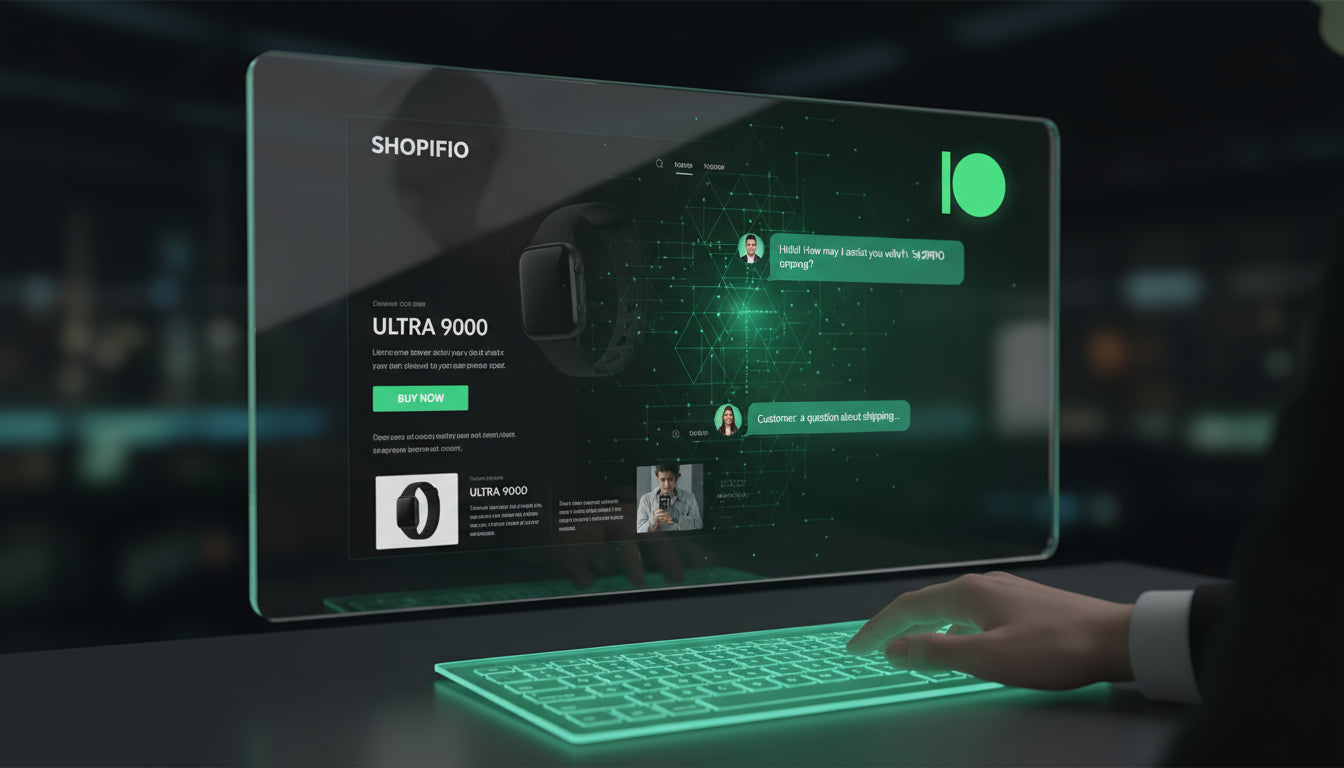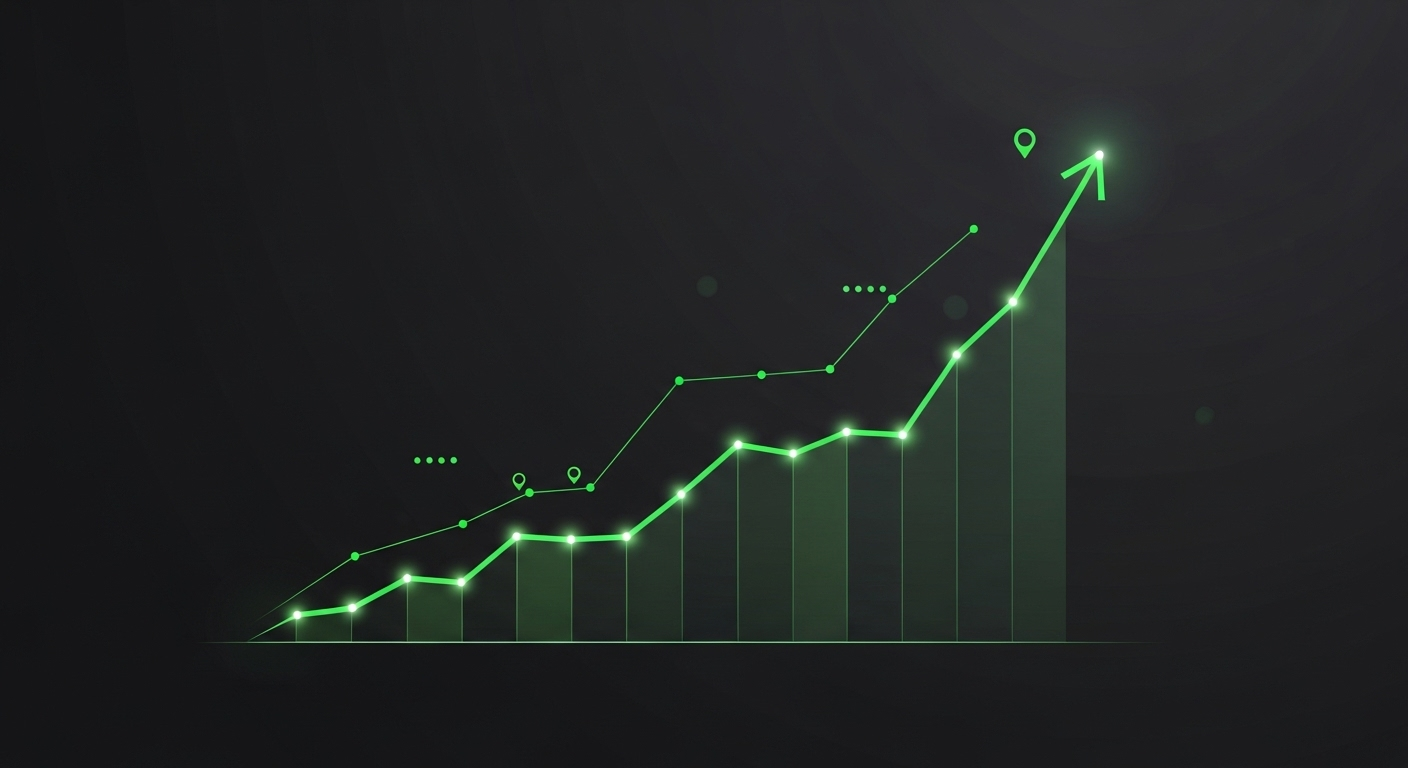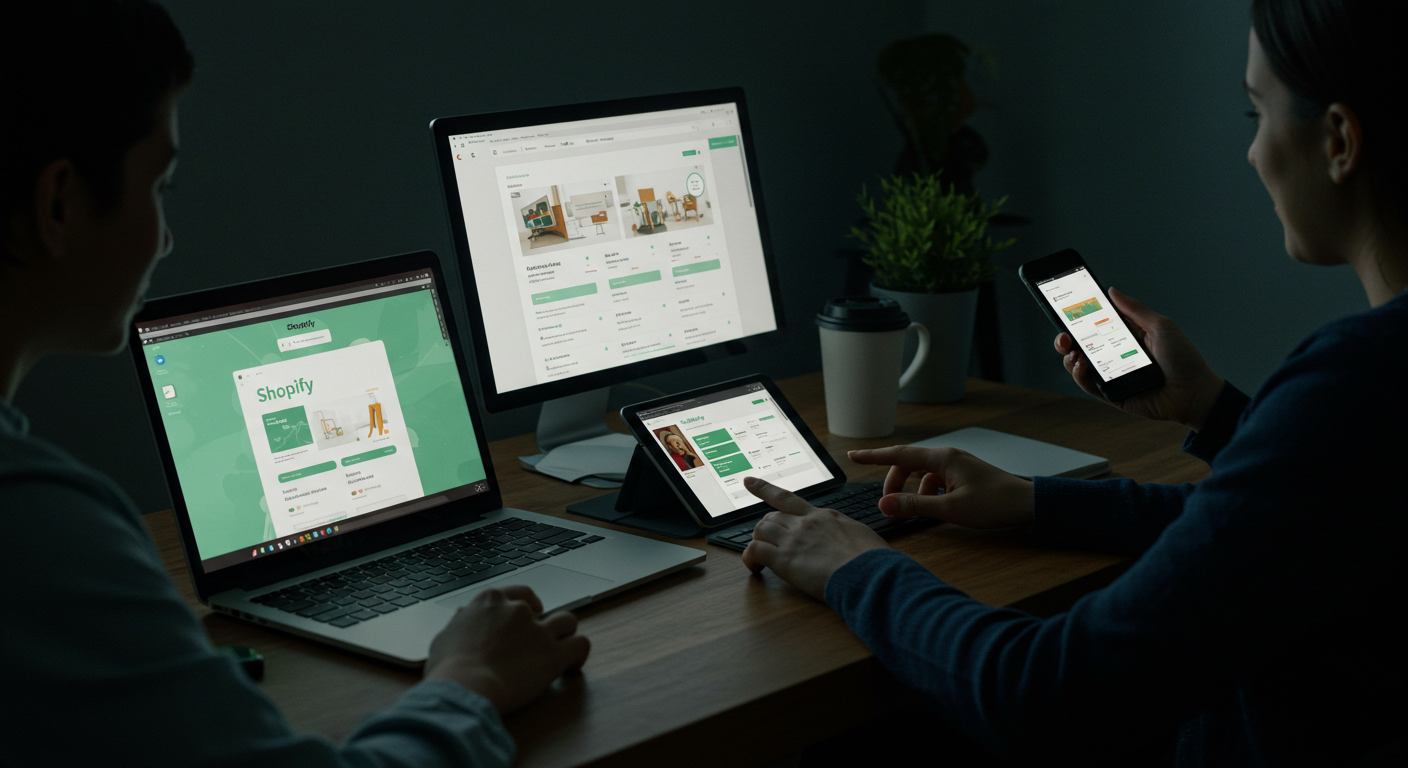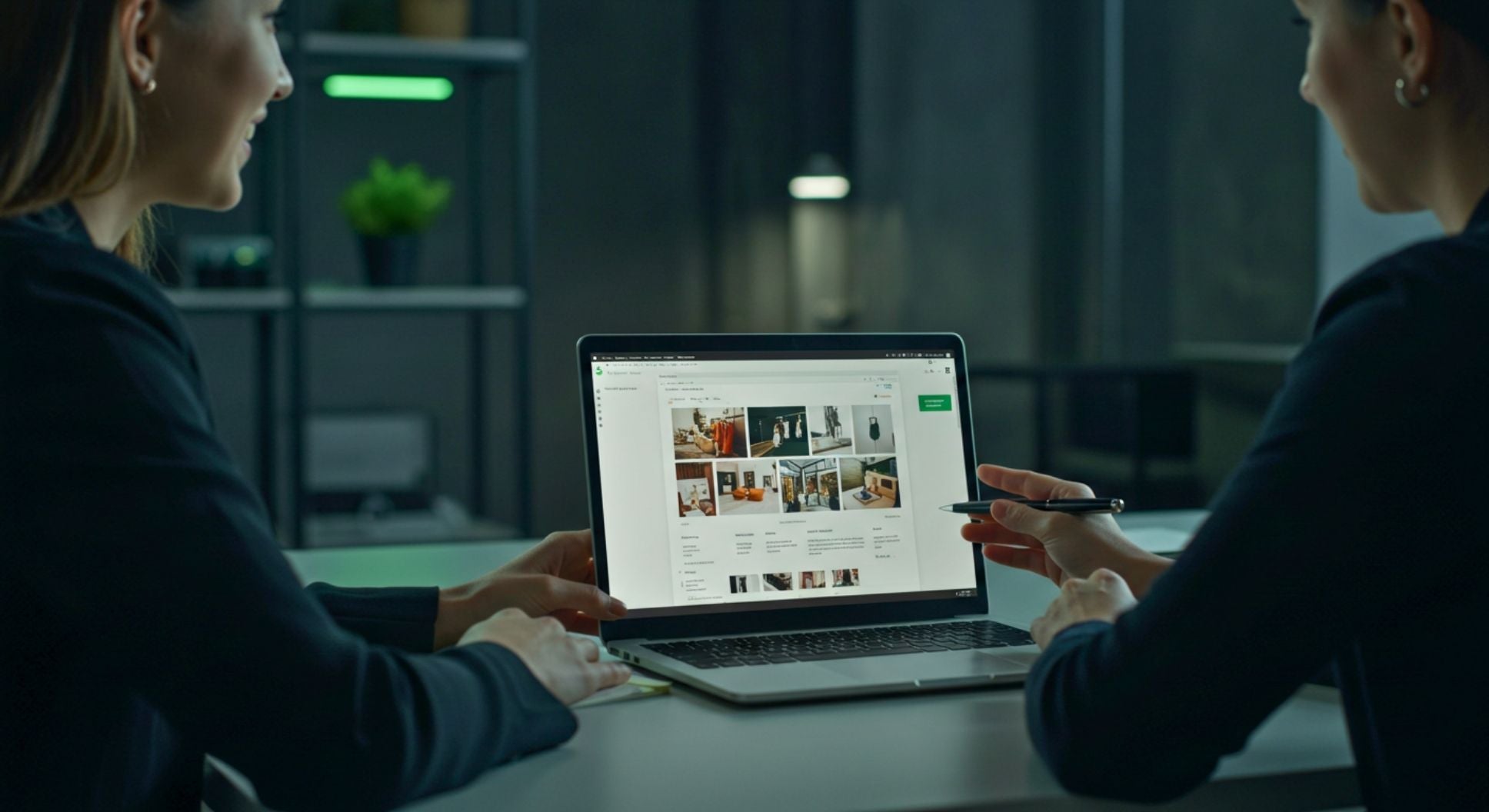Drive Traffic to Your Shopify Store: A Complete Guide
Introduction
In the competitive world of online shopping, standing out is crucial for success. This article serves as a comprehensive guide on how to drive traffic to your Shopify store. With over 12 million online stores on Shopify, many entrepreneurs struggle with low visibility and inadequate visitor numbers.
This guide will equip you with effective strategies to enhance your store's traffic through various proven methods. You will learn:
- The significance of understanding your target audience
- SEO strategies that boost organic visibility
- How to leverage social media platforms effectively
- Email marketing techniques to retain customers
- Improving user experience to increase conversion rates
- Paid advertising options for immediate results
- Monitoring performance and adapting strategies over time
With these insights, you can create tailored marketing efforts that resonate with potential buyers. Ready to transform your Shopify store into a thriving online destination? Let's dive in!
Understanding Your Target Audience
Identifying your target audience is crucial for driving traffic to your Shopify store. Understanding demographics and preferences allows you to create tailored marketing strategies that resonate with potential customers. This personalization leads to higher engagement and conversion rates.
Significance of Demographics and Preferences
Knowing your audience helps you:
- Craft targeted marketing messages that speak directly to their needs.
- Optimize product offerings based on what resonates with different segments.
- Enhance customer satisfaction, leading to repeat visits and referrals.
Tools and Methods for Market Research
Utilizing the right tools can significantly improve your market research efforts:
- Google Keyword Planner: This tool helps you identify high-volume keywords related to your products, providing insights into what potential customers are searching for online.
- Ahrefs: A powerful SEO tool that allows you to analyze competitors’ strategies, uncover keyword opportunities, and evaluate backlink profiles. You can gain valuable insights into what drives traffic in your niche.
Both tools are essential for understanding search behavior around your offerings.
Creating Customer Personas
Once you've gathered data, developing detailed customer personas is a beneficial next step. A customer persona is a semi-fictional representation of your ideal customer based on:
- Demographic information (age, gender, location)
- Behavioral patterns (shopping habits, brand loyalty)
- Pain points and challenges they face
Creating these personas enables you to tailor your marketing strategies effectively:
- Content creation becomes more focused on addressing specific concerns or interests of each persona.
- Product recommendations can be personalized, increasing the likelihood of conversions.
Understanding your target audience forms the foundation of successful traffic-driving strategies. This knowledge not only informs how you communicate but also enhances the overall shopping experience on your Shopify store.
SEO Strategies for Increased Visibility
Driving organic traffic to your Shopify store relies heavily on effective SEO strategies. Implementing these strategies not only enhances visibility but also attracts potential customers actively searching for your products.
Importance of SEO
- Organic Search Traffic: Approximately 33% of website traffic originates from organic search results. This statistic highlights the necessity of optimizing your store for search engines.
- Cost-Effectiveness: Unlike paid advertising, the effects of good SEO can last long after the initial effort, providing a continuous influx of visitors without ongoing costs.
On-Page SEO Techniques
To maximize your store's visibility, focus on optimizing the following elements:
- Titles: Utilize compelling titles that incorporate relevant keywords. This helps search engines understand what each page is about while attracting clicks from users.
- Meta Descriptions: Write clear and concise meta descriptions that summarize the content of your pages. Including target keywords can improve click-through rates from search engine results.
- URLs: Create clean and descriptive URLs that include keywords relevant to the page’s content. This aids both users and search engines in understanding what they can expect from a given page.
- Images: Optimize images by using alt text that describes the image content with relevant keywords. Proper file names and compression techniques also enhance loading speed, contributing to better user experience and SEO rankings.
Off-Page SEO Techniques
Building authority through off-page tactics is equally important:
- Guest Blogging: Write articles for reputable blogs within your niche. This generates backlinks to your Shopify store, which search engines view as endorsements.
- Social Media Leverage: Share content on social media platforms to drive traffic back to your site. Engaging posts can facilitate shares, further increasing visibility and potential backlinks.
Content Marketing Strategies
Engaging content plays a pivotal role in attracting visitors:
- Blog Posts: Create informative blog posts addressing common questions or challenges faced by your target audience. Incorporate internal links to product pages, guiding readers toward making purchases.
- Video Marketing: Utilize video platforms like YouTube to showcase product demonstrations or tutorials. Videos capture attention effectively and can redirect viewers to your Shopify store through links in descriptions.
Implementing these SEO strategies for your Shopify store ensures a steady flow of organic traffic while enhancing user engagement. The combined approach of on-page optimization, off-page efforts, and compelling content marketing establishes a strong foundation for long-term success in driving visitors to your online shop.
Leveraging Social Media Platforms for Traffic Generation
Choosing the Right Platforms
Identifying suitable social media platforms for your Shopify store is crucial for effective traffic generation. Not all platforms will resonate with your target audience. Consider the following:
- Demographics: Research where your ideal customers spend their time online. For instance, Instagram is highly visual and works well for lifestyle products, while LinkedIn is better suited for B2B services.
- Platform Features: Different platforms offer unique features that can enhance engagement. For example, Pinterest allows users to discover visually appealing content, making it ideal for product-driven businesses.
Utilize tools like Google Analytics to track where your traffic originates. This data helps refine your platform selection.
Engaging Your Audience on Social Media
Creating compelling content is essential for driving traffic to your Shopify store. Focus on these strategies:
- Content Formats: Experiment with various content types such as images, videos, stories, and polls. High-quality visuals capture attention and encourage shares.
- User-Generated Content (UGC): Encourage customers to share their experiences with your products. Reposting UGC not only builds community but also serves as authentic testimonials.
- Interactive Posts: Use polls or questions to engage followers. This interaction fosters a sense of community and keeps your brand top-of-mind.
- Consistent Posting Schedule: Regular updates keep your audience engaged. Aim to post consistently without overwhelming followers.
By strategically selecting social media platforms and creating engaging content tailored to those channels, you enhance visibility and drive more traffic to your Shopify store.
Email Marketing Techniques to Drive Repeat Traffic
Email marketing for your Shopify store serves as a powerful tool for driving repeat traffic. Fostering a connection with your audience through email can significantly increase customer retention and conversion rates.
Building Your Email List
Growing a subscriber base is crucial. Consider these effective strategies:
- Opt-In Forms: Place sign-up forms on your website, particularly in high-visibility areas such as the homepage, blog posts, or during the checkout process. Offering incentives like discounts or exclusive content encourages sign-ups.
- Social Media Integration: Use your social media platforms to promote your email list. Share posts that highlight the benefits of subscribing, such as access to special promotions or insider news.
- Exit-Intent Popups: Implement popups that appear when visitors are about to leave your site. These can prompt users to subscribe in exchange for a discount or valuable resource.
Crafting Effective Email Campaigns
Once you have built your list, focus on creating compelling email campaigns that inspire action. Consider these key elements:
- Personalization: Tailor emails according to user preferences and past interactions. Personalized subject lines and content can increase open rates significantly.
- Clear Call-to-Actions (CTAs): Every email should include prominent CTAs that encourage recipients to visit your store. Ensure buttons are visually appealing and clearly state what the recipient will gain by clicking.
- Engaging Content: Incorporate rich visuals, product recommendations based on browsing history, and engaging storytelling within your emails. Content that resonates with the audience keeps them interested and drives clicks back to your store.
- Segmenting Your Audience: Segment subscribers into different categories based on behavior or demographics. This allows you to tailor messages specifically suited for each group, enhancing relevance and engagement.
Implementing these email marketing techniques can lead to increased traffic as customers return to explore new offers or products showcased in your campaigns. A well-maintained email strategy not only brings visitors back but also fosters loyalty among your customer base.
Improving User Experience (UX) on Your Shopify Store
User experience optimization plays a critical role in retaining visitors and increasing conversions. A well-designed Shopify store creates a seamless shopping journey. Key elements to enhance UX include:
- Fast Load Times: Websites that load quickly keep users engaged. Aim for loading times under three seconds to minimize bounce rates.
- Intuitive Navigation: Clear and logical navigation helps visitors find products easily. Use clear categories and subcategories, ensuring that important pages are accessible within a few clicks.
- Mobile Responsiveness: A significant portion of online shopping occurs on mobile devices. Ensure your site is fully responsive, providing an optimal viewing experience across all screen sizes.
- Compelling Visuals: High-quality images and videos can capture attention. Utilize zoom features and provide multiple angles of products to enhance the shopping experience.
- Clear Calls-to-Action (CTA): Strategically place CTAs to guide users towards desired actions, such as "Add to Cart" or "Checkout". Make these buttons prominent and easy to find.
- Accessible Design: Ensure your website adheres to accessibility standards, making it usable for individuals with disabilities. This includes alt text for images and proper contrast ratios.
Prioritizing these aspects of UX design not only enhances customer satisfaction but also encourages repeat visits and higher conversions on your Shopify store.
Paid Advertising Options to Consider
Pay-per-click (PPC) advertising is a powerful method for driving targeted traffic to your Shopify store. Understanding how PPC works can enhance your marketing strategy significantly.
How PPC Advertising Works
- Bid-Based System: You bid on specific keywords related to your products. When users search for these keywords, your ad may appear at the top of search results.
- Payment Structure: You only pay when someone clicks on your ad, making it a cost-effective option.
- Targeting Options: PPC allows you to target specific demographics, locations, and even times of day, ensuring your ads reach the right audience.
Benefits of PPC Advertising
- Immediate Results: Unlike organic methods that take time to build traction, PPC provides instant visibility.
- Measurable Outcomes: Tools such as Google Ads offer analytics that allow you to track clicks, conversions, and ROI effectively.
- Flexible Budgeting: You can set daily or monthly budgets, adjusting them based on performance to maximize efficiency.
Implementing PPC advertising for your Shopify store can create immediate traffic influx while refining your audience targeting capabilities. This approach complements other strategies outlined in this guide and enhances overall marketing efforts.
Monitoring Performance and Adapting Strategies Over Time
Tracking the performance of your Shopify store is essential for sustainable growth. Utilizing tools like Google Analytics allows you to gain insights into key metrics such as:
- Traffic Sources: Understand where your visitors are coming from—organic search, social media, or direct visits.
- User Behavior: Analyze how users interact with your site, including bounce rates and time spent on pages.
- Conversion Rates: Monitor how many visitors complete a purchase compared to total visitors.
Data-driven decisions enhance your marketing efforts. Regularly reviewing these metrics informs you about which strategies are effective and which need adjustment. For instance, if a particular ad campaign drives significant traffic but not conversions, it may be time to revise your landing page content or call-to-action.
Consider implementing A/B testing to compare different strategies. This involves running two versions of a marketing element (like an email subject line) to see which performs better.
Adjustments based on real-time data can lead to improved targeting and messaging, ultimately driving more relevant traffic to your store. Consistent monitoring fosters an agile approach that keeps pace with changing consumer behaviors and market dynamics.
Conclusion
To increase traffic to your Shopify store, consistency is key. Implement the strategies discussed throughout this guide and keep these points in mind:
- Regularly monitor your performance using tools like Google Analytics.
- Adapt your marketing approaches based on data-driven insights.
- Engage with your audience through personalized content and effective communication.
As you apply these techniques, remember that patience is necessary. Traffic growth takes time and requires ongoing effort. Each strategy may yield different results depending on your unique market and audience.
Stay committed to refining your tactics based on performance metrics. This comprehensive guide serves as a roadmap for success, guiding you to effectively drive traffic to your Shopify store. Embrace the journey of experimenting with various methods, track what works, and scale your efforts accordingly.
FAQs (Frequently Asked Questions)
What is the purpose of this comprehensive guide?
The purpose of this guide is to provide a detailed overview of effective strategies for driving traffic to your Shopify store, covering various aspects such as understanding your target audience, SEO strategies, social media engagement, and more.
How can I effectively understand my target audience?
Understanding your target audience involves conducting market research to identify demographics and preferences. Tools like Google Keyword Planner and Ahrefs can help you gather insights, while creating detailed customer personas allows you to tailor your marketing strategies accordingly.
What are some essential SEO strategies for my Shopify store?
Essential SEO strategies include on-page techniques like optimizing titles, meta descriptions, URLs, and images with relevant keywords. Off-page techniques involve building backlinks through guest blogging and leveraging social media. Additionally, content marketing strategies such as creating engaging blog posts and utilizing video marketing can attract more visitors.
Which social media platforms should I use to drive traffic to my store?
Choosing the right social media platforms depends on where your target audience is most active. It's important to identify these platforms and create compelling content that engages your audience effectively to drive traffic to your Shopify store.
How can email marketing help increase repeat traffic?
Email marketing can increase repeat traffic by building a subscriber base interested in your products. Crafting effective email campaigns with persuasive messages encourages recipients to revisit your store regularly.
What role does user experience (UX) play in retaining visitors?
User experience optimization is crucial for retaining visitors and increasing conversions. Key elements of great UX design include intuitive navigation, fast loading times, and a visually appealing layout that enhances the overall shopping experience.
Share:
0 comments
Blog posts
-

ChatGPT as the New Marketplace: Is Your Shopify Store Ready for a Sales Revolution?
Key Insights (TL;DR): A New Era of E-commerce: OpenAI is transforming ChatGPT from a language model into a full-fledged marketplace where customers can shop directly within a conversation. For e-shops, this means the emergence of a completely new, high-conversion sales...
-

Beyond the Hype: How to Capitalize on 2025's Trending Products
Beyond the Hype: How to Capitalize on 2025's Trends Every year, Shopify releases its much-anticipated list of trending products, and like clockwork, a wave of excitement sweeps through the entrepreneurial world. Aspiring founders see terms like "skincare," "supplements," or "custom...
-

How to Turn Your Handmade Hobby into a Successful Online Business: The Ultimate Guide
You have golden hands and a heart full of passion. Every piece you create—whether it's a ceramic mug, a silver necklace, a painted canvas, or artisanal jam—carries a piece of you. It's a story that deserves to be told. And...
-

Unlock Your Creative Empire: The Ultimate Guide to Print-on-Demand Success
Have you ever dreamt of turning your creative passions into a thriving online business? Imagine seeing your artwork, designs, or witty slogans emblazoned on t-shirts, mugs, posters, and more – and selling them to happy customers around the globe, without...
-

The Ultimate Guide to E-commerce Success in 2025 & Beyond
The year 2025 is rapidly approaching, and with it, the undeniable dominance of digital commerce. In this evolving landscape, establishing a strong e-commerce presence is no longer a luxury, but a necessity for business growth and sustainability. Consumers are increasingly...
-

Unlock Seamless Shopify Store: Master Visual Stability for Higher Conversions
Introduction: Is Your Shifty Layout Costing You Sales? In the fast-paced world of e-commerce, first impressions are everything. Visual stability, the unsung hero of website design, ensures your Shopify store maintains its layout as it loads. Why is this crucial?...













